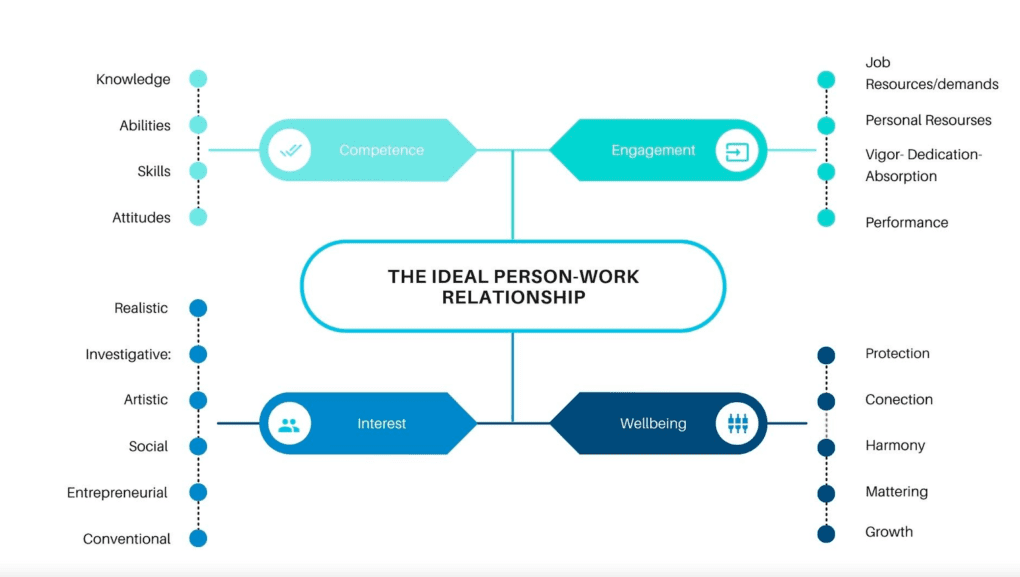The proliferation of HR buzzwords like quiet quitting, conscious quitting and rage applying have stirred conversation and confusion about the U.S. talent market. While these viral terms are mostly harmless attempts to harvest clicks, I believe one deserves unpacking.
“Quiet hiring” is the idea that instead of hiring people to fill vacancies, employers should give existing employees more work, roles and responsibilities for the same pay. Quiet hiring suggests the U.S. suffers a talent shortage when, in fact, we face a skills shortage.
That distinction has led forward-looking organizations to develop workplace learning and development programs for reskilling, cross-skilling and upskilling as well as apprenticeships in which new hires “earn and learn” through immersion in a job. These approaches challenge the tendency of recruiters to overweight college degrees and underweight potential.
Workplace L&D programs only work, however, if everyone in the company is committed to learning. HR professionals and managers tend to be risk-averse and may not believe in the ROI of these programs. Likewise, your C-suite colleagues may feel conflicted about how to address vacancies in software development, customer success and data science that could make or break the company’s future. Can just “anyone” learn these roles often staffed by people with bachelor’s and master’s degrees?
In other words, who to upskill is perhaps a bigger question than if to upskill. How do you identify the individuals most likely to deliver a return on this investment? Which will help you demonstrate to your peers that a culture of learning is the solution to never-ending talent wars?
1. Go deep into the anatomy of your job roles
Start with an audit of how your organization’s roles map to your company services and the needs of your customers. You probably already know which jobs roles are chronically vacant and difficult to fill. An audit, however, will pinpoint the emerging roles your organization will need in five to 10 years, and the jobs that will become obsolete. Employees in the roles facing extinction are the highest priority for upskilling.
The next step is to define what it takes for someone to be effective in those vacant and emerging roles. According to researcher Paulina Guzman at University of Michigan, it is not just knowledge but also skills, abilities, attitudes and interests that predict success in a role. For instance, a customer success manager needs to be an active listener, empathetic and responsive. They’re usually a “people person” who enjoys helping others. They’re also a skillful and patient teacher who helps clients adopt a complex product. The CSM must learn some knowledge, but not necessarily through college courses.
Who in your organization is likely to have transferable skills for customer success? Someone who thrives in your contact center, working with customers when they are frustrated and in need of help. Likewise, someone who works on a delivery and installation team may have developed transferable skills while helping customers locate, set up and learn to use their new devices. At my prior software company, we hired former teachers, counselors, social workers and public policy professionals who shined in customer success roles.
2. Get to know your workforce
Your most valuable assets are your current employees, and you should get to know them. Assume a portion of them don’t match the role they are in and will leave eventually, or you will let them go. To identify potential upskillers in this cohort, you’ll need to query your HR data, survey managers and check performance metrics. In addition to finding candidates with transferable job skills, I recommend screening in three areas.
First, screen for interest and enjoyment. According to Hungarian psychologist Mihaly Csikszentmihalyi, being able to enjoy your work is the main factor for getting into a state of flow. Employees who spend long stretches in that flow state will perform better and stay with their employer longer. Lead employees to a role they love by helping them identify whether their current role matches their natural interests. A sad sales professional could become a happy and effective customer success manager. A web developer who loves to make things work could transfer skills and be a happy UI/UX designer.
Second, recognize that knowledge and credentials are only part of why an individual fits a certain job role. Researchers in work engagement list three other important elements: skills, abilities and attitudes. As I already noted, the skills and abilities an employee already possesses are a platform for upskilling into jobs with similar underlying competencies. Attitude is also key for upskilling, and the good news is that you already have a lot of data about the resilience, initiative, creativity, leadership and life-long learning attitude of your employees. You can find fast learners by examining data on how rapidly employees met job expectations, like quotas for sales or ticket resolution. Cross-check their performance reviews and metrics, customer reviews and peer reviews.
Third, assess employee engagement, defined as “a desirable condition” that “connotes involvement, commitment, passion, enthusiasm, focused effort and energy.” Employees in the wrong role given their interests, skills and abilities will be disengaged and at a high risk of attrition, even if they have immense potential. Offering these employees the opportunity to learn a new role can solve the problem.
3. Build a learning community
The hard part is convincing managers and other employees to try a new way of hiring and developing talent (a subject for another time). Attracting existing employees into upskilling programs is the easy part.
When approaching potential upskillers, minimize the friction. Tell employees who have been selected to apply for this opportunity because of their exceptional performance. Include a brief, jargon-free description of the target job, what they will learn and do in the program, pay scales during versus after, and how their progress will be measured. They should feel like Harry Potter receiving his invitation letter to Hogwarts, with that sense of being singled out as unique and full of unrecognized potential.
Rather than expect candidates to do the application at home, carve out time at work for them to complete interviews, aptitude testing and so forth. Otherwise, employees who have childcare responsibilities or work multiple jobs may not apply. Don’t require lengthy, written applications that disadvantage neurodiverse learners and those for whom English is a second language. If verbal and written communication matter for the role, you can test for it or plan to develop those skills in the apprenticeship. Again, look for abilities, skills, attitudes and work engagement and offer the opportunity for employees to try new career pathways through “cross-skilling.”
After vetting this talent pool — with prompt, forthright feedback to those filtered out — welcome the remaining employees into a community. Introduce them to the teammates with whom they’ll upskill as well as cross-functional mentors who will provide additional coaching. Schedule time for potential upskillers to shadow someone in their job role, join meetings and ask team members questions.
After establishing those relationships, ask participants for a commitment. Once the candidates have signed on, celebrate with a companywide announcement and an event to recognize this turning point in their careers. Upskillers may feel like they’re drinking from the firehose, but the best way for someone new to learn is by doing.
Easy choice
When companies quiet-hire, they risk stressing some of the most talented people in their organizations, guaranteeing more job vacancies. Employees who interpret quiet hiring as an attempt to take advantage of their dedication will not remain in the job for long.
Upskilling is the opposite of quiet hiring. It reduces overwork and loudly celebrates the potential of employees by giving them an opportunity to learn. It also feeds an internal talent pool and culture of learning that can fill critical roles in the years to come. Organizations that upskill will become engines of social mobility and meritocracy, countering America’s entrenched inequalities and disturbingly expensive college system.
As a chief learning officer, the most important choice you will make is not if to do workplace learning programs but how to identify the best matches for your open roles. That choice can transform lives and determine the future competitiveness of your organization. No HR buzzword captures that precious honor and responsibility.

Source: Paulina Guzman, 2023















